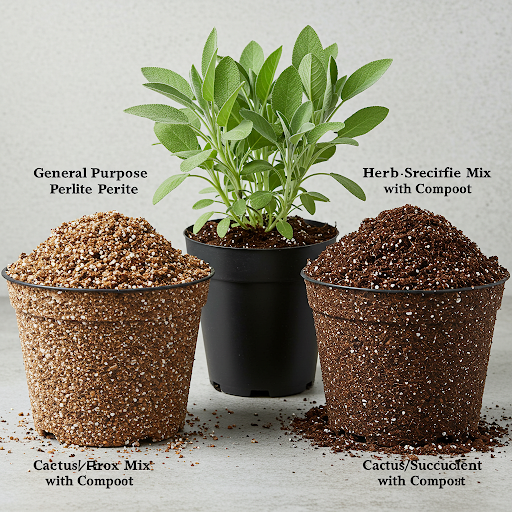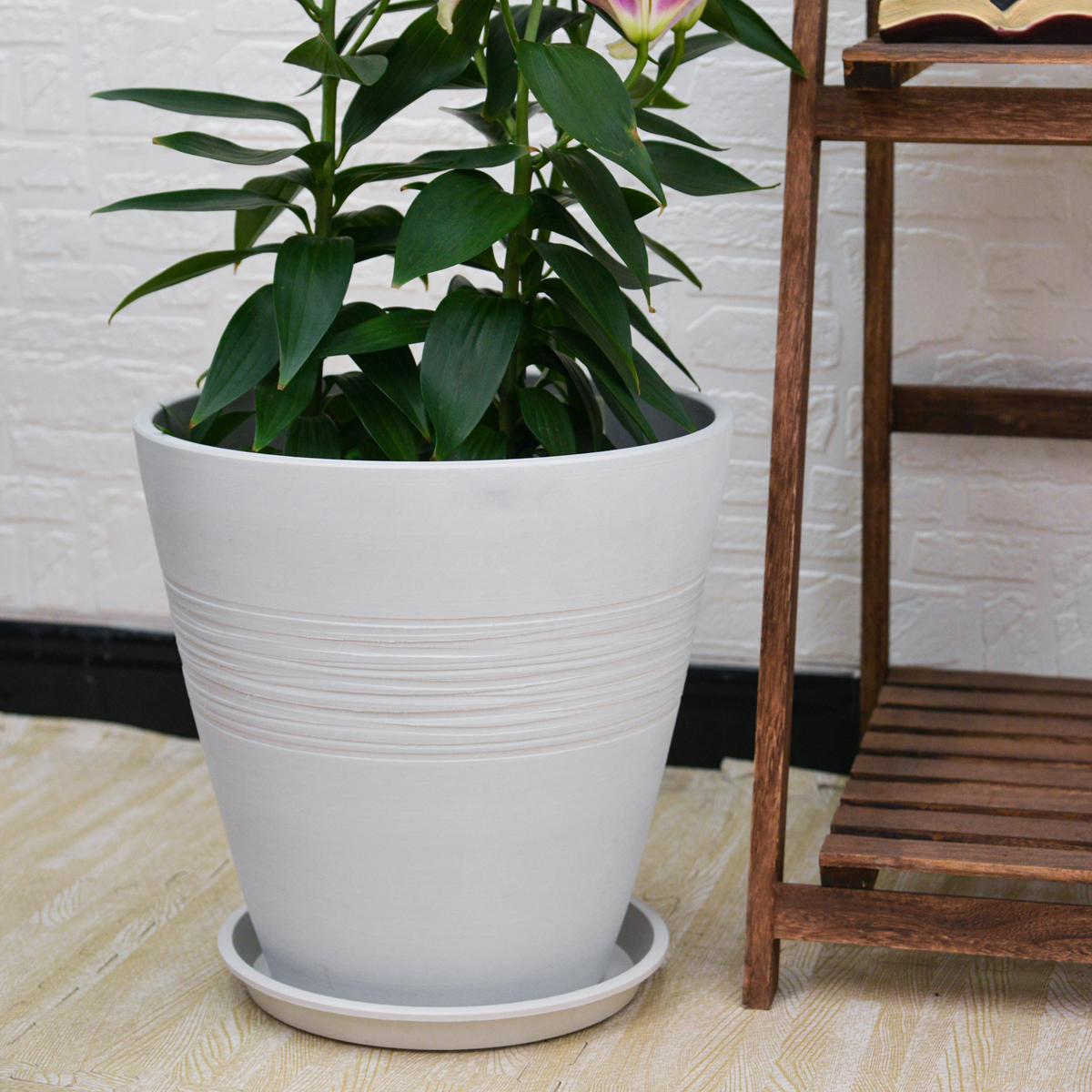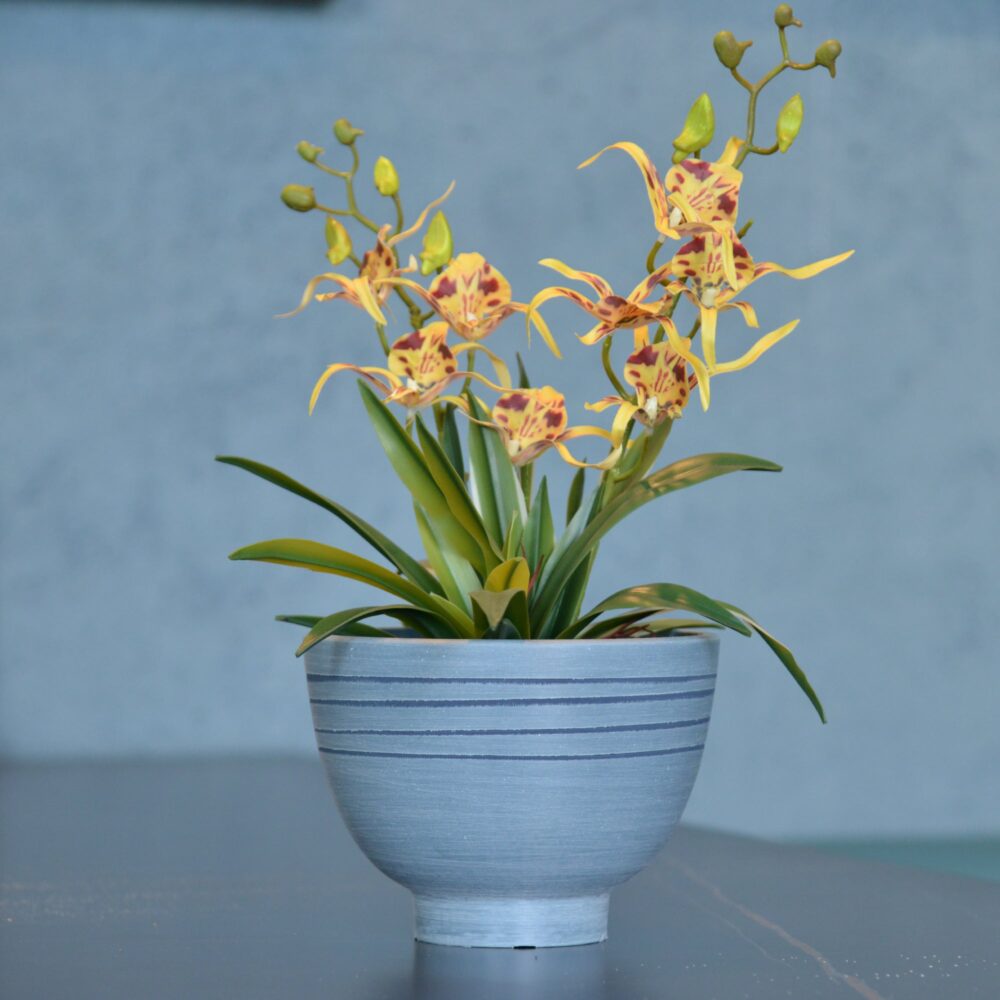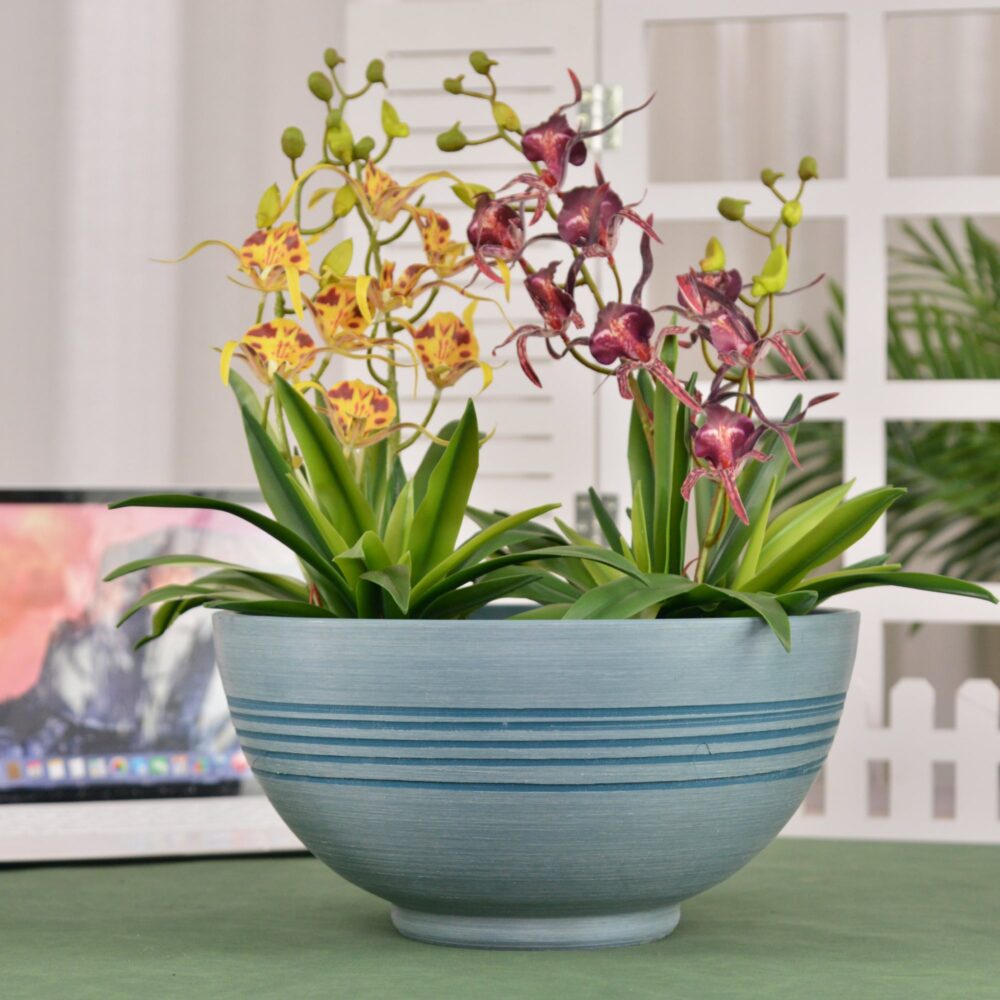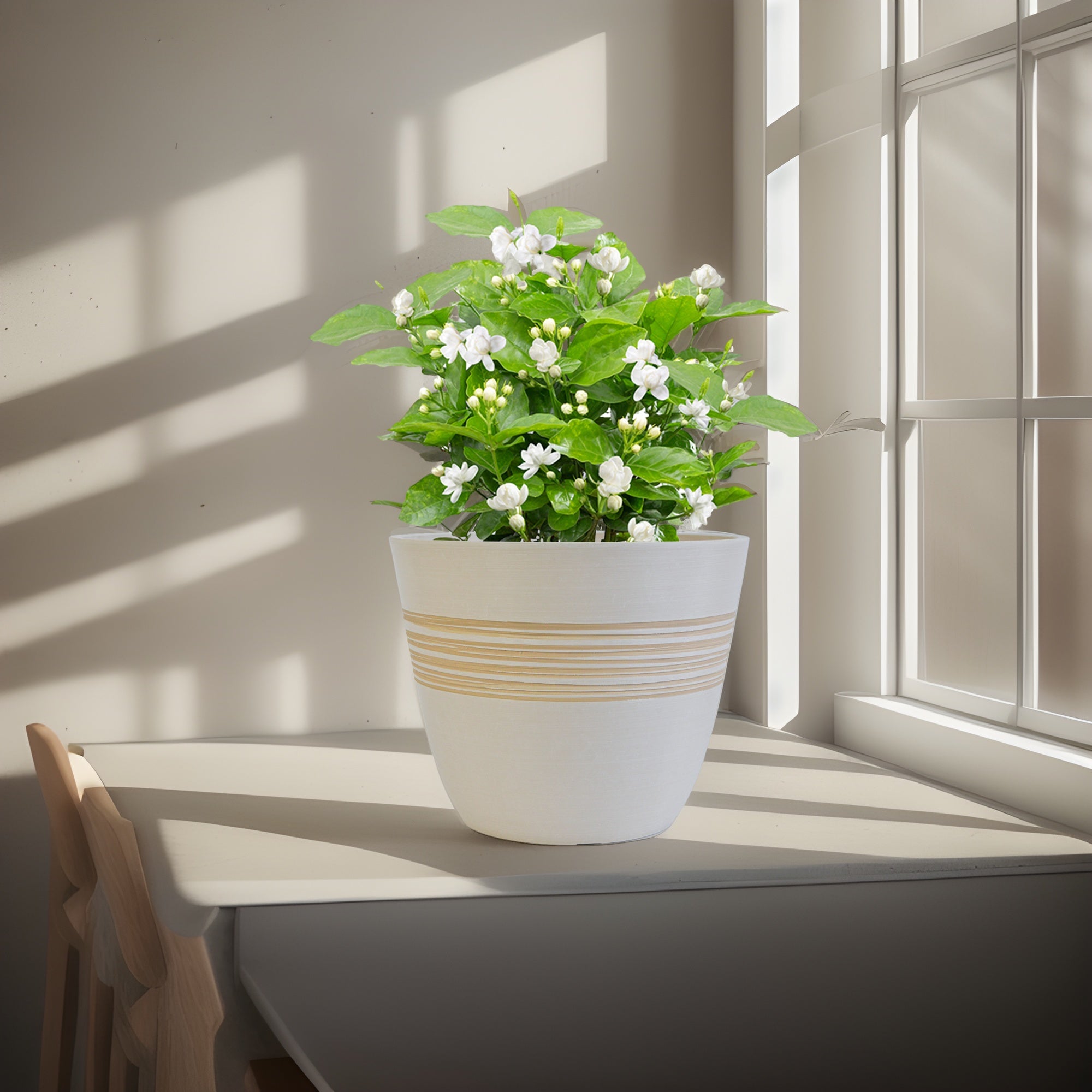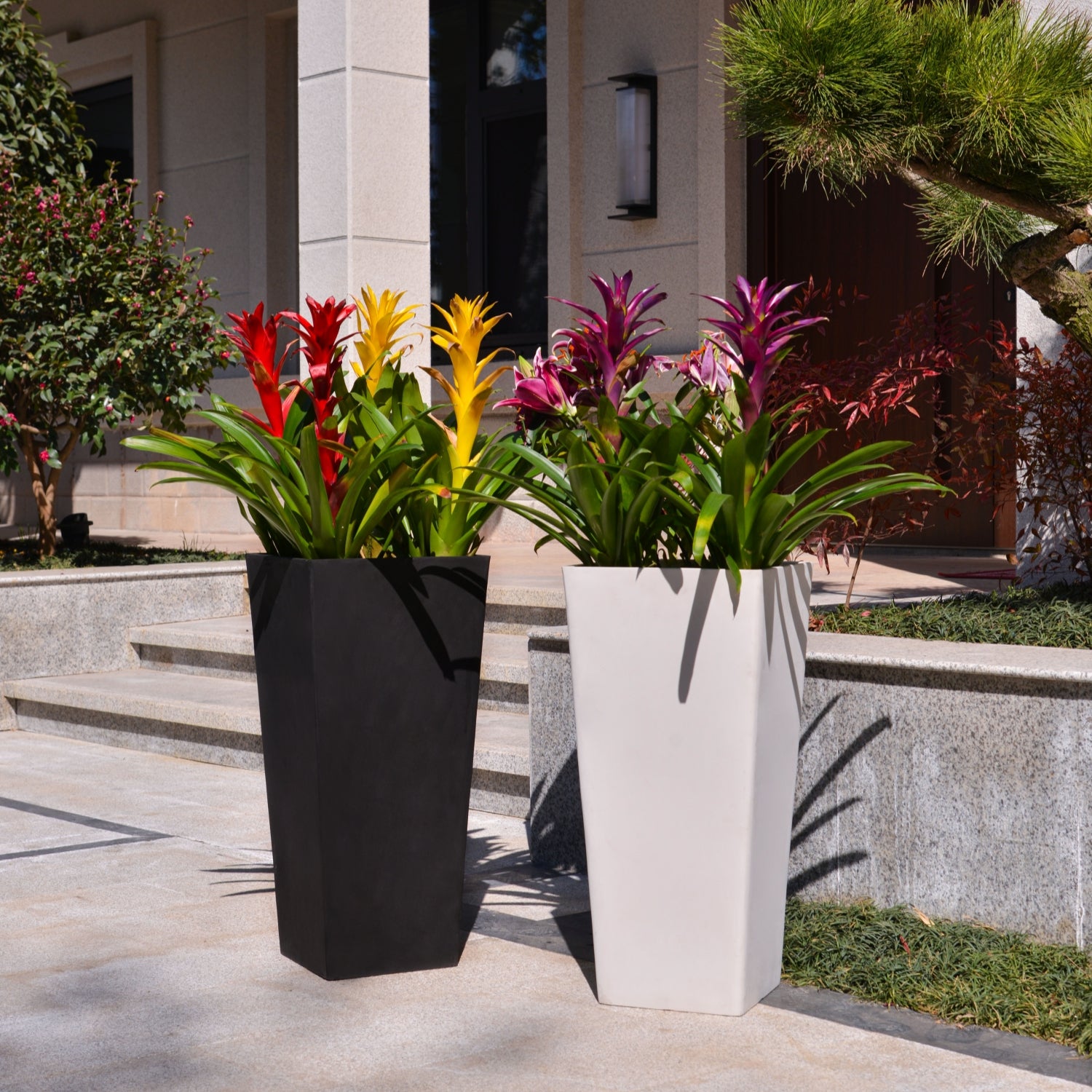Does Potted Sage Have Any Specific Soil Requirements? What Type of Potting Soil Should You Use?
Providing the right soil is crucial for growing healthy and flavorful sage (Salvia spp.) in containers. While sage is not overly demanding, it does have some preferences that, when met, will lead to a thriving plant. For American gardeners looking to ensure their potted sage is in the ideal growing medium, here’s what you need to know about its soil requirements:
Key Soil Requirements for Potted Sage:
- Well-Draining: This is the most critical requirement for sage. It originates from the Mediterranean region, which has dry, sunny conditions. Sage roots are susceptible to rot if they sit in waterlogged soil.
- Loamy Texture: Sage prefers a loamy soil, which is a balanced mix of sand, silt, and clay. This texture provides good structure while allowing for adequate drainage and aeration.
- Moderate Fertility: While sage doesn’t need rich, heavily fertilized soil, it does benefit from soil with moderate fertility and organic matter. Soil that is too rich can sometimes result in less intense flavor.
- Slightly Alkaline to Neutral pH: Sage thrives in soil with a pH between 6.0 and 7.0.
Recommended Types of Potting Soil for Sage:
Based on these requirements, here are some suitable types of potting soil for growing sage in containers:
- All-Purpose Potting Mix with Amendments: A good quality all-purpose potting mix can work well, especially if you amend it to improve drainage. You can add perlite or coarse sand to the mix (about 20-30% by volume) to enhance aeration and drainage.
- Herb-Specific Potting Mix: Many garden centers offer potting mixes specifically formulated for herbs. These mixes are usually lighter and provide the excellent drainage that sage prefers.
- Cactus and Succulent Mix: While seemingly counterintuitive, a cactus or succulent mix can also be suitable for sage due to its excellent drainage properties. You might consider adding a bit of organic matter, like compost, to provide some nutrients.
- Homemade Mix: You can create your own well-draining mix by combining equal parts of potting soil, perlite, and compost or well-rotted manure.
Tips for Preparing the Soil:
- Ensure Good Drainage: Regardless of the potting mix you choose, make sure your container has adequate drainage holes to allow excess water to escape.
- Avoid Heavy Soils: Heavy clay-based soils that retain a lot of moisture are not suitable for sage in pots as they can lead to root rot.
- Consider Organic Options: Since sage is often grown for culinary purposes, opting for an all-natural organic potting mix is a good choice to avoid synthetic fertilizers and chemicals.

By providing your potted sage with a well-draining, loamy soil that is not overly rich, you’ll create an ideal environment for it to flourish and produce flavorful leaves for your culinary uses.
KC2-GS
By greenship|2024-08-16T06:30:21+00:00August 16, 2024|Categories: Hand-carving Series|
8 inch/10 inch Planter Indoor Plants, 2 Pack Modern Decorative Plant Pots with Drainage Hole, Cute Bowl Shape Flower Pots
By greenship-seo|2025-04-10T08:03:42+00:00January 9, 2025|Categories: Hand-carving Series|Tags: Decorative Flower Pots, Self-Watering Pots|
11V
By greenship|2024-08-13T03:05:48+00:00August 13, 2024|Categories: Hand-carving Series|
13 inch Planter for Indoor Plants, Set of 2 Modern Decorative Plant Pots with Drainage Hole, Cute Bowl Shape Flower Pots
By greenship-seo|2025-04-10T07:41:46+00:00January 10, 2025|Categories: Hand-carving Series|Tags: Decorative Flower Pots, Self-Watering Pots|
Planter for Indoor Outdoor Plants, Set of 2 Modern Decorative Plant Pots with Drainage Hole, Decorative Flower Pots
By greenship-seo|2025-04-10T07:46:01+00:00January 9, 2025|Categories: Hand-carving Series|Tags: Decorative Flower Pots, Self-Watering Pots|
GreenShip 27inch Tall Planters for Porch, Large Outdoor Planter Pots with Drainage Hole
By greenship-seo|2025-04-10T06:27:21+00:00April 7, 2025|Categories: Hand-carving Series|Tags: Decorative Flower Pots|

